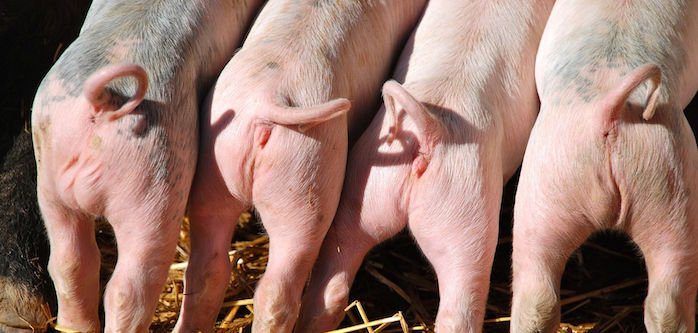The New Year often sees people making resolutions – either to start something new (going to the gym, eating better, taking up a hobby) or to give something up, usually a vice, writes Annie Davies.
Sadly, the vice that appears to be a permanent, niggling issue for me is tail biting –not personally (although with three warring children in the house, I am often thankful they don’t have tails), but in a professional sense.
It would seem to be a straightforward problem. Pigs are not content in some way and so express that in aberrant behaviour – tail biting is a frequent manifestation of that.
Simply put, all we need to do is identify the cause of that discontent and the problem should go away. So far, so good.
However, determining which of the myriad triggers for this vice is the primary cause of an outbreak often requires investigative skills beyond even those of Hercule Poirot.
It is clear from the way this topic can dominate any situation, be it conversation on farm or a formal industry meeting, that vets are not alone in our frustration that however hard we try to address this issue, a permanent solution appears to be beyond us. It can be an incredibly emotional issue for those struggling with an outbreak, and the fallout in terms of morale cannot be underestimated.
We use the term ‘multifactorial’ to describe the varied causes for vice on farm. Some of them are reasonably obvious – for example, a poor environment, insufficient feeder space, ventilation issues, and disease can all act as triggers.
When attempting to find a solution, it seems appropriate that our approach is multidisciplinary, involving vets, stockpeople, nutritionists, geneticists and welfare scientists.
Our challenge is to find a way of controlling this vice that negates the need for tail docking. A holistic approach needs to look at all aspects of the pigs’ environment, including the diet, the stressors a pig is subjected to and health status.
Further research in some areas, notably that of genetics and welfare science, requires aspects of aggression and vice to be still more carefully measured.
There may be ‘blue sky’ answers out there, but to find them we need to continue looking.
I hope that this year will see some answers emerge from the many projects that individual producers, companies and research establishments are conducting.
I think our resolution as an industry must be to pool our knowledge, share what works and, in investigating why it works, hope to see some patterns emerge.
I don’t think we’ll find a silver bullet answer, but we may find some that enable us to improve the situation on farm.
- Annie Davis has worked at the George Veterinary Group for 19 years. She is one of a team of seven pig vets, based in Malmesbury, Wiltshire




